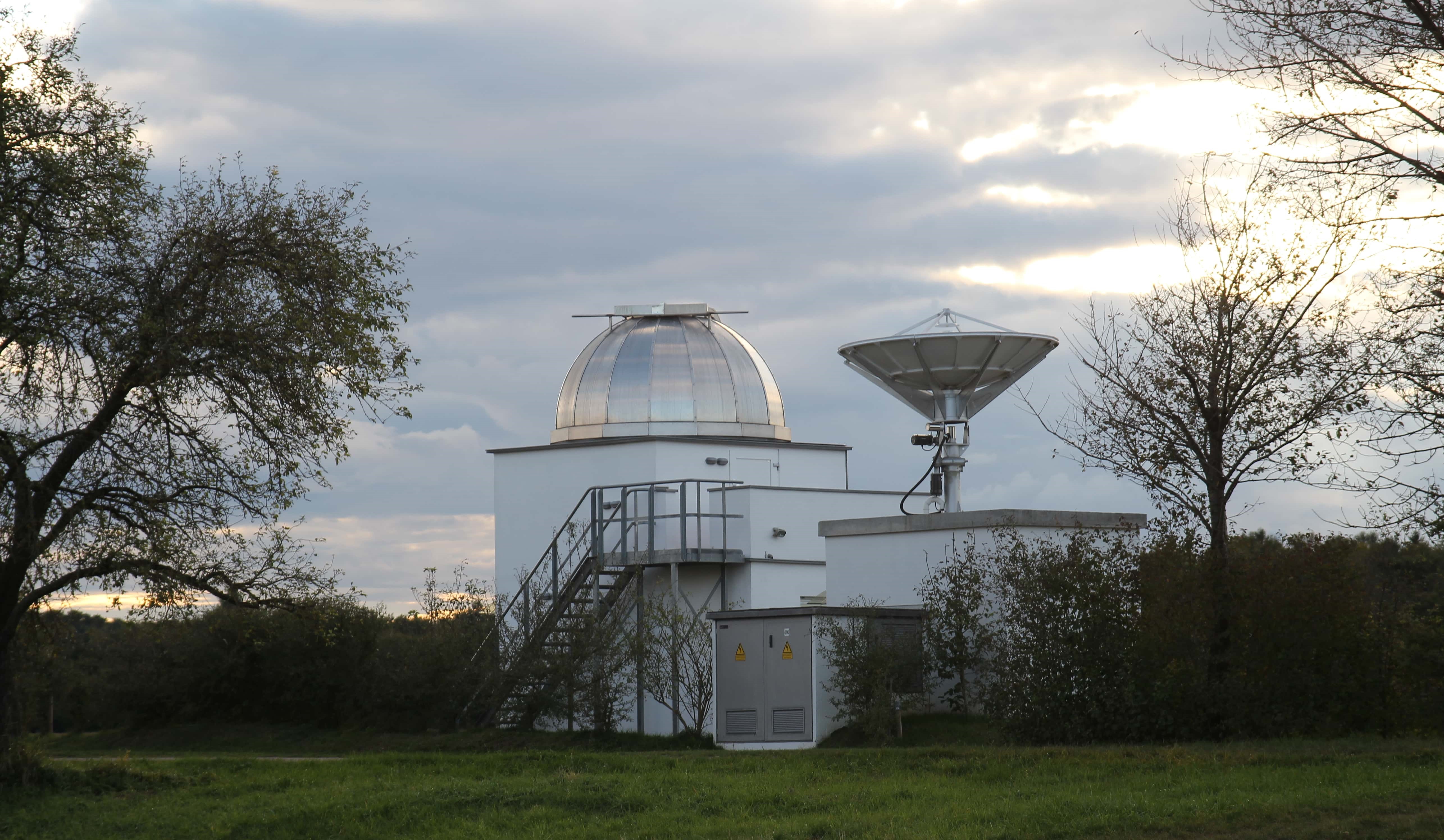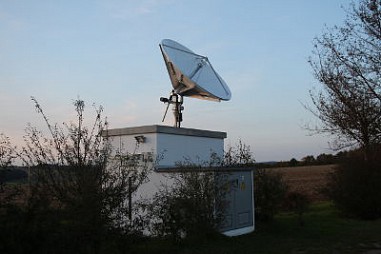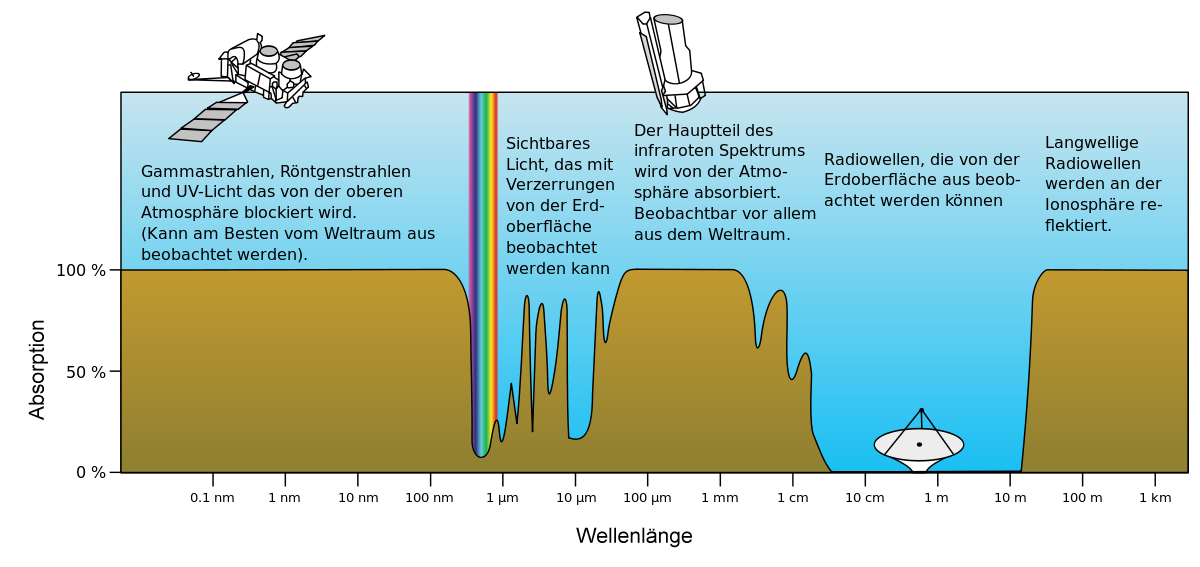Astronomical objects emit energy in the form of electromagnetic waves in the entire wavelength spectrum. They emit high-energy, very short-wave gamma and X-ray radiation as well as longer-wave and hence lower-energy radiation such as visible light, even longer-wave infrared and microwave radiation and even lower-energy radio radiation.
Radio radiation gets its name from the fact that humans use electromagnetic radiation in this wavelength range for radio transmission.
The Earth's atmosphere absorbs or scatters the electromagnetic radiation emitted by astronomical objects. The physical processes responsible for this vary in strength depending on the wavelength. Gamma radiation, for example, is absorbed in the upper atmosphere and does not reach the earth's surface. For visible light, short-wave infrared radiation and long-wave radiation in the radio wave range, on the other hand, the Earth's atmosphere is relatively well permeable, as the following figure shows well. Astronomical objects can be observed particularly well through these "atmospheric windows".




